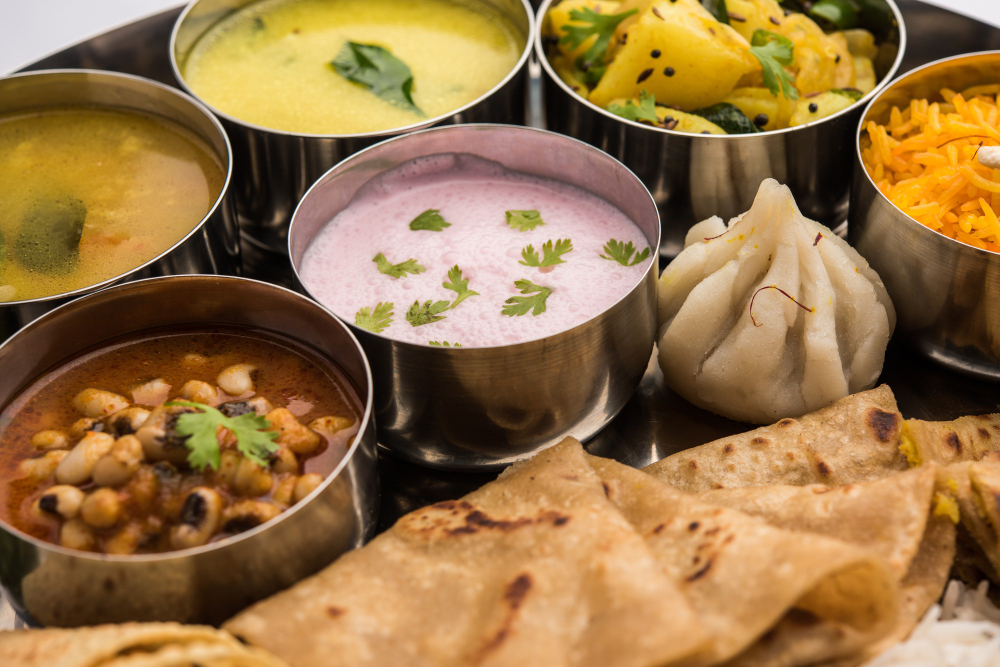Introduction: More Than Just a Meal
Food is never just about eating. It’s about stories, traditions, laughter around the dining table, and recipes passed down from grandparents who never measured spices yet got them just right.
Every dish carries a piece of culture and memory. The smell of ghee on hot rotis, the crackle of tadka in dal, or the sweetness of mango ras in summer isn’t just food—it’s nostalgia on a plate.
In today’s digital-first, globalized world, our relationship with food is shifting. While we hold on tightly to traditional recipes, we’re also exploring new trends, global cuisines, and Instagram-worthy meals.
Let’s take a journey through food and culture—nostalgic recipes, food memories, and the ever-evolving food landscape.
- Nostalgia on the Plate: Why Old Recipes Still Matter
Think back to your childhood. Do you remember…
- The Sunday breakfast your mom made?
- The festive sweets wrapped in ghee-stained paper?
- The first bite of pani puri after school?
That’s food memory in action. Nostalgic recipes act as time machines.
🔹 Examples of Nostalgic Recipes
- India: Rajma chawal, puran poli, idli-sambar, aamras-puri.
- Italy: Grandma’s lasagna baked slowly with love.
- Mexico: Tacos from street corners, filled with childhood joy.
- Japan: Bento boxes packed by mothers with tiny details.
Every culture has those dishes that anchor people to their roots. Even today, when fine dining restaurants serve modern dishes, a simple plate of comfort food can make people emotional.
- Food Memories: A Universal Language
Psychologists say that food memories are some of the strongest we hold. The aroma of a dish can transport us back decades.
- Festivals & Family: Gujiyas during Holi, modaks during Ganesh Chaturthi, turkey on Thanksgiving.
- Street Food Adventures: Golgappas, hot dogs, churros—cheap, messy, and unforgettable.
- Grandmother’s Kitchen: Where recipes were unwritten but embedded in memory.
Food memories build identity. Ask anyone about their favorite dish, and you’ll likely hear a story tied to family, childhood, or celebration.
- How Globalization Changed Food Culture
With the internet and migration, food is no longer confined to regions. Global cuisine has entered every home.
- Sushi is as common in New York as pizza.
- Indians relish ramen bowls, while Koreans experiment with butter chicken.
- Fusion experiments—tandoori pasta, chocolate samosas, paneer tacos—show how playful food culture has become.
Globalization has turned food into a shared cultural experience. But it has also sparked debates on authenticity vs. adaptation. Is pizza topped with paneer still pizza? Maybe yes—because food evolves just like language.
- Evolving Food Trends in the Digital Age
The 21st century has given rise to new food movements that reshape how we cook, eat, and share.
🔹 Instagrammable Food
From rainbow bagels to freak shakes, the internet made food a visual experience. A dish must be “camera-ready” before it’s eaten.
🔹 Health-Conscious Choices
Plant-based diets, gluten-free baking, keto recipes—people are experimenting with health-driven trends while balancing nostalgia for traditional food.
🔹 Farm-to-Table & Sustainability
Conscious eating is now part of food culture. Farmers’ markets, organic ingredients, and reducing food waste have become mainstream.
🔹 Experiential Dining
From food trucks to Michelin-starred tasting menus, dining today is an experience, not just a meal.
🔹 Food Influencers & Digital Storytelling
Reels of recipes, ASMR cooking videos, and viral challenges like “Dalgona coffee” show how social media drives global food trends.
- The Emotional Side of Food: Why We Keep Going Back
Why do we crave grandma’s dal even after eating at fancy restaurants? Because food is emotional currency.
- Comfort & Safety: Certain recipes feel like a warm hug.
- Belonging: Eating traditional food connects us to community.
- Identity: For migrants, recreating home food is a way of keeping culture alive.
Food creates continuity in a world that’s always changing.
- The Future of Food & Culture
Where is food headed in the next decade? The trends suggest a fascinating mix of tradition and innovation.
- AI & Food Tech: Personalized diet plans, AI-powered recipe apps.
- Alternative Proteins: Lab-grown meat, plant-based seafood.
- Nostalgia Reimagined: Modern chefs reinventing old recipes in stylish ways.
- Virtual Food Culture: Food festivals in the metaverse, recipe NFTs, and virtual dining experiences.
- Return to Roots: Ironically, while tech advances, people are also going back to traditional recipes and local ingredients.
The future of food is hybrid—part nostalgia, part innovation.
- Recipes as Cultural Heirlooms
In many families, recipes are treasures handed down like jewelry.
- A handwritten notebook of pickles and chutneys.
- A scribbled paper with “the way dadi made kheer.”
- The oral instructions of how long to roast spices “until the aroma feels right.”
Documenting recipes isn’t just about cooking—it’s about preserving heritage. Some NGOs and communities are now creating food archives to ensure that old recipes aren’t lost.
- Food, Identity, and Belonging
Food also becomes political and social. Think about:
- Immigrant communities recreating home dishes abroad to maintain identity.
- Fusion food as a symbol of multiculturalism.
- Veganism and sustainability as part of a conscious lifestyle.
Food culture evolves, but it always reflects who we are and what we value.
Conclusion: A Taste of Memory, A Bite of the Future
Food is the most delicious way we connect to culture. Nostalgic recipes remind us where we came from, food memories remind us who we are, and evolving trends show where we’re going.
In every plate of rajma chawal, every experimental sushi taco, and every viral Dalgona coffee reel lies a simple truth—food is culture, and culture is ever-changing.
Next time you take a bite of your favorite dish, pause. What story does it tell? What memory does it carry? And what new trend might it inspire tomorrow?
Because in the end, food is more than sustenance—it’s our collective heritage, identity, and future.

